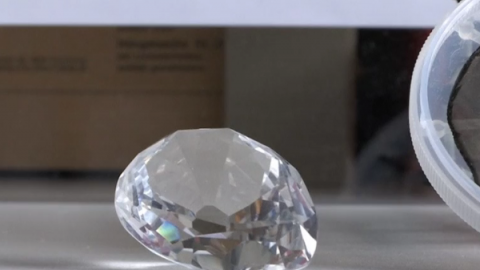
AUGSBURG, Germany (Reuters) — German scientists say they have created the world’s largest disclosed synthetic diamond.
Researchers at Ausgburg University have developed a process for producing synthetic diamonds through chemical vapour deposition at around one tenth of atmospheric pressure. Hydrocarbon molecules are deposited on an iridium base and the diamond “wafer” grows layer by layer.
Twenty six years after the research began in 1991, the scientists in Augsburg have created a single 155 carat crystal diamond in disc form, with a diameter of 92 millimetres – larger in diameter than the prized Cullinan 1 diamond mounted in the sceptre of the British Queen.
Capital Markets diamond analyst Des Kilalea dismissed such comparisons. “The Cullinan 1 was originally 3,106 carats when it was found, so the comparison is meaningless,” he told Reuters.
The discoid form of synthetic diamonds means they have only limited potential for use in jewellery. But physicist Matthias Schreck, who led the study, said there were numerous industrial applications, including in mechanics, optics and electronics.
The diamonds could also help us produce more of our energy from renewable sources.
According to the university’s website, two synthetic diamond crystals made in Augsburg have recently been used for measurements in the accelerator ring at CERN (European Organization for Nuclear Research).
Schreck, and fellow study leads Dr. Stefan Gsell and Dr. Martin Fischer, say the crystal structures of natural diamonds and those created by themselves are identical.
Kilalea said that, although the vast majority were detectable, the “prevalence of synthetic diamonds is a growing threat to the gem diamond industry” as their cost of production falls.
The researchers published their findings in scientific journal Scientific Reports.







